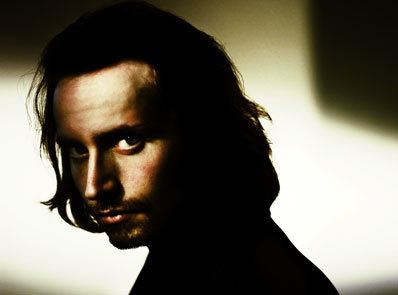Name Marcus Paus Grandparents Ole Paus Albums Umea4ever, Upperdog | Parents Ole Paus | |
 | ||
Siblings Madeleine Heide Paus, Sole Christian Paus, Heide Katharina Paus Similar People Ole Paus, Henny Moan, Benedicte Paus, Anne‑Karine Strom, Vilde Bjerke | ||
Lasuliansko horo by marcus paus
Marcus Nicolay Paus (born 14 October 1979) ([ˈmɑrkʉs ˈpæʉs]) is a Norwegian composer and one of the most performed contemporary Norwegian composers. He is noted as a representative of a reorientation toward tradition, tonality and melody, and his works have been lauded by critics in Norway and abroad. His work includes chamber music, choral works, solo works, concerts, orchestral works, operas and symphonies, as well as works for theatre, film and television. In 2010, he was artistic director of the Oslo Opera Festival. Marcus Paus has several times collaborated with his famous father, Ole Paus.
Contents
- Lasuliansko horo by marcus paus
- Marcus paus two lyrical pieces ii fanitull devil s tune
- Background
- Music
- Collaborations
- Selected works
- Awards
- References
Marcus paus two lyrical pieces ii fanitull devil s tune
Background
He is a member of the Norwegian patrician Paus family and is the son of the singers Ole Paus and Anne-Karine Strøm. His grandfather was General Ole Paus, and his great-grandfather was Norwegian consul-general in Vienna and estate owner Thorleif (de) Paus. His great-great-grandfather, the steel industrialist and chairman of Den norske Creditbank Ole Paus, was a first cousin of Henrik Ibsen. He is married to author Hilde Lindset. Marcus Paus is a third cousin of the designer Pontine Paus, who also belongs to the steel industrialist branch of the family.
Paus attended Oslo Waldorf School and studied at the Norwegian Academy of Music (1998–2002) and Manhattan School of Music (2003–2005). He has lived in New York City and London, and now lives in Berlin.
Music
Paus is a noted representative of a reorientation toward tradition, tonality and melody. Although often tonal and melodically driven, Paus' music employs a wide range of both traditional and modernist techniques, including aleatoricism and serial procedures. Paus' harmonic writing is typically complex, combining non-traditional structures such as clusters and symmetrical harmonic shapes with triadic harmony. Several of Paus' works have been influenced by folk music and non-Western classical music, among them Lasuliansko Horo (2004) for violin and piano (Bulgarian folk music), the flute concertino A Portrait of Zhou (2012) (Chinese music), and Fanitull (Devil's Tune) from Two Lyrical Pieces (2007) for string orchestra (Norwegian folk music). As a teenager, Marcus Paus was active as a progressive rock guitarist, and this experience is at times reflected in some of Paus’ most energetic music, like the Scherzo II from his Cello Sonata (2009) and the 3rd movement, Mosh, from his Three Movements for Solo Cello (2012).
As a young composer in 2007, he described himself as a "cultural conservative non-modernist." In a 2013 interview, he said that he is not opposed to modernism, but that he supports diversity in musical styles and influences, and a "greater acceptance of a tradition-inspired musical style."
Collaborations
Known for his virtuosic and idiomatic writing, Paus has collaborated with some of Norway's finest soloists, including violinists Henning Kraggerud and Arve Tellefsen, saxophonist Rolf-Erik Nystrøm and singer Tora Augestad. Marcus Paus is also known for his collaborations with other artists, most prominently Swedish painter Christopher Rådlund, as well as singer/songwriter and poet Ole Paus (the librettist of several of Paus’ operas). Other collaborators have included film director Sara Johnsen, dancer, choreographer and FRIKAR founder Hallgrim Hansegård, and actress Minken Fosheim. Paus has set a number of poets in English and Norwegian, among them André Bjerke, Arne Garborg, Knut Hamsun, Johan Falkberget, Harald Sverdrup, Ole Paus, William Shakespeare, Christina Rossetti, Emily Dickinson, W.B. Yeats, Oscar Wilde, Siegfried Sassoon, Dorothy Parker and Richard Wilbur. All of Paus’ four string quartets to date are themed after painters (nos.1 and 4 on paintings by Edvard Munch, no.2 on a painting by Halfdan Egedius, and no. 3 on paintings by Christopher Rådlund).
